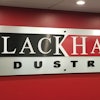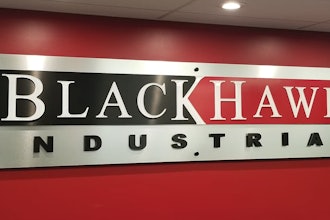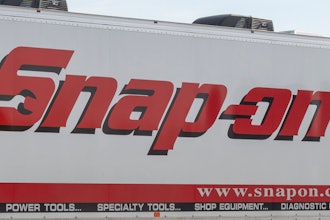
The stereotypical suburban backdrop in popular culture is often portrayed as the mom-and-apple-pie serenity of bucolic residential neighborhoods. This is distinctly different from the bustle of business and industrial energy of cities and manufacturing centers. The realities of today’s business landscape have changed, and these outdated perceptions are no longer accurate (if indeed they ever truly were). Urban environments are hubs of activity and innovation, but are also becoming more crowded and competitive — and the economic and logistical calculus no longer makes as much sense for industrial uses. At the same time, suburban areas are becoming more dynamic and diverse, welcoming a range of different development categories.
Today, suburbs offer a compelling alternative to the traditional urban location for industrial tenants. As more of those industrial tenants take advantage of the relative abundance of space, cheaper rents, and access and transportation efficiencies that suburban locations can offer, entire metropolitan regions are benefitting. Job markets are strengthened, and cities and their surrounding communities are becoming more profitable and productive.
Understanding why suburban settings are an increasingly popular and sensible setting for industrial tenants leads directly to some important insights. A robust and well-established industrial and manufacturing sector in the suburbs plays an essential role in boosting major metropolitan areas.
A good fit
What makes suburban locations such a good fit for industrial uses, and why are industrial innovators increasingly choosing to be in suburbs over cities? One of the biggest and most important reasons is access to the employee base. While many cities have boosted their downtown residential offerings in recent years, the suburbs are still where the majority of the population in any given market lives. The ease of a short commute and the convenience of abundant parking are real assets for both current and future industrial employees. Those same transportation and accessibility benefits are manifest in operational logistics, as well. Suburban locations near highway interchanges are advantageous, and spacious suburban campuses and facilities can more easily accommodate large trucks and transport.
Land tends to be much less expensive in the suburbs — which is especially important given that industrial facilities tend to be horizontal in nature, and generally take up a lot more space than their vertical counterparts in other industries. Not only is it less expensive to build in the suburbs, but the sites are larger, which makes the logistics of both construction and production/operation significantly easier. The extra space allows for a bigger site laydown area which can be helpful for the types of materials that require staging for industrial facility builds. Additionally, industrial tenants have more elbow for greater design and operational flexibility.
An evolving industrial landscape
While this trend continues to pick up steam, we already see significantly more industrial locations in suburbs compared to 20 years ago. The biggest reasons are the cost and ready availability of land as outlined above, but technology and innovation in an evolving industry have also played a role. It isn’t just the locations that are changing: industrial facilities today are very different than they were in the past. These facilities are designed and operated in ways that make them more adaptable and allow them to take advantage of the space (and spaces) that the suburbs offer. Those changes begin with the geometry of the buildings themselves. A lot of light industrial or assembly facilities are simply taller than they used to be. Racking and conveyer systems have become more sophisticated, opening up more vertical interior space. Structures that used to have a 16-foot clear height are now regularly 22 or 24 feet. In the past, industrial buildings were primarily single-use structures. Today, however, they are more often built with future expansion and adaptation in mind. That forward-looking versatility and consideration of future potential expansion extends from the structural elements themselves (it’s easier to expand a steel-bearing building instead of a masonry-bearing building), to site selection, planning, and layout details.
Regional benefits
Bringing more industrial production to the suburbs doesn’t just benefit business owners–it also brings more job opportunities to the region. While the high density and vertical construction profile of Central Business Districts and crowded urban centers are better suited for retail and office, spacious and convenient suburban settings are a good fit for industrial tenants that require additional square footage. A strong mix of employment opportunities maximizes a city’s economic potential and makes the regional economy more stable, robust and resilient. The result is an economy capable of maintaining forward momentum, even when hardships may strike one specific area.
Relocation best practices
Industrial executives and decision makers considering a suburban property, or actively looking to relocate to the suburbs, should keep the following principles and priorities in mind as they move forward:
Build for the future: Suburban locations give you exceptional space and flexibility. Take advantage of that flexibility by not limiting yourself. Make sure the space you acquire or develop has sufficient room to grow as your operation changes or evolves over time. Your business might look very different just five or 10 years down the road, and your facility or facilities may need to be significantly expanded or reconfigured accordingly.
Prioritize transportation and logistics: Prioritize sites near major highway or transportation hubs. The benefits of favorable transportation infrastructure are significant and enduring.
Look for incentives: Work with municipalities to see what incentives may be available. The ability to bring a significant number of good-paying jobs into a community is an appealing proposition for many civic leaders, and you would be wise to take advantage of that leverage when you have it.
Consider your employment base: If you are relocating, be thoughtful and strategic about not only where you will be hiring from, but where your existing personnel are located. Ensuring employees have a reasonable commute to maintain work/life balance, for example, is a good way to ensure a successful relocation process.
 Todd Sachse, Founder and CEO of Sachse Construction
Todd Sachse, Founder and CEO of Sachse ConstructionTodd Sachse is Founder and CEO of Sachse Construction, a Detroit-based construction management firm recognized as one of the most trusted and respected construction partners in North America licensed in all 50 states, Canada and Puerto Rico. For more information, visit www.sachseconstruction.com.






















